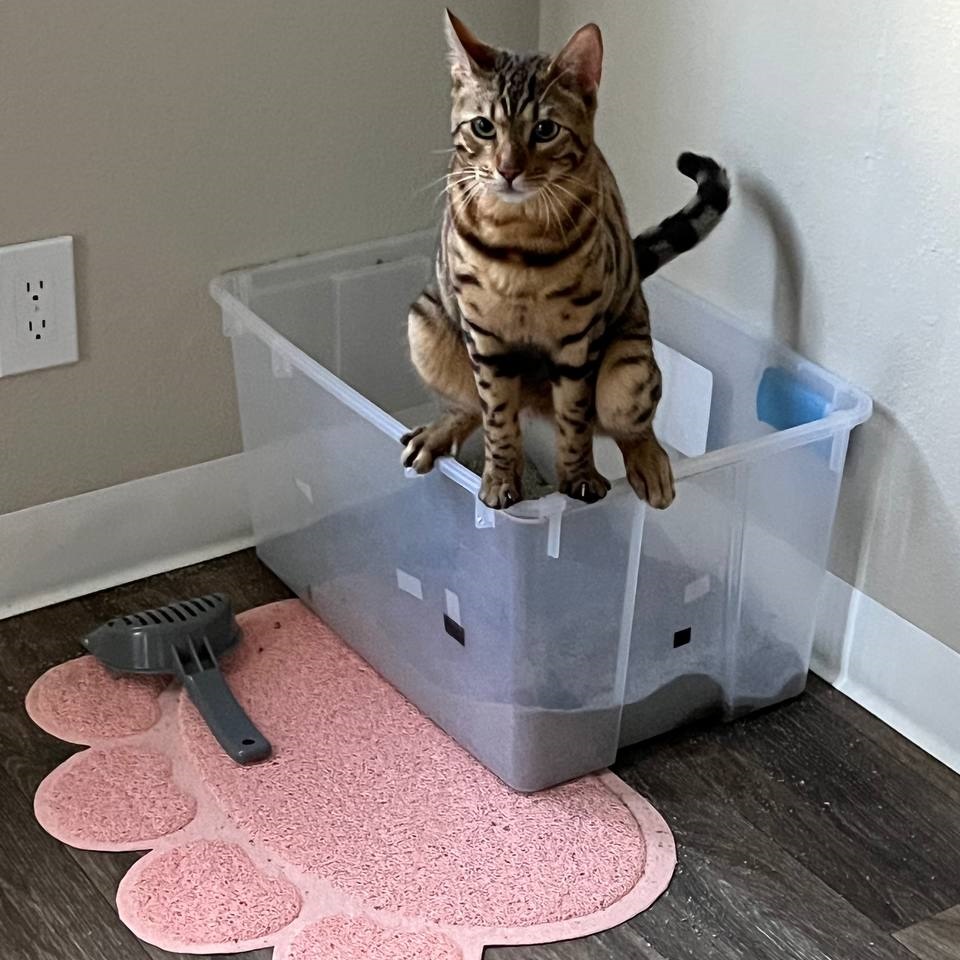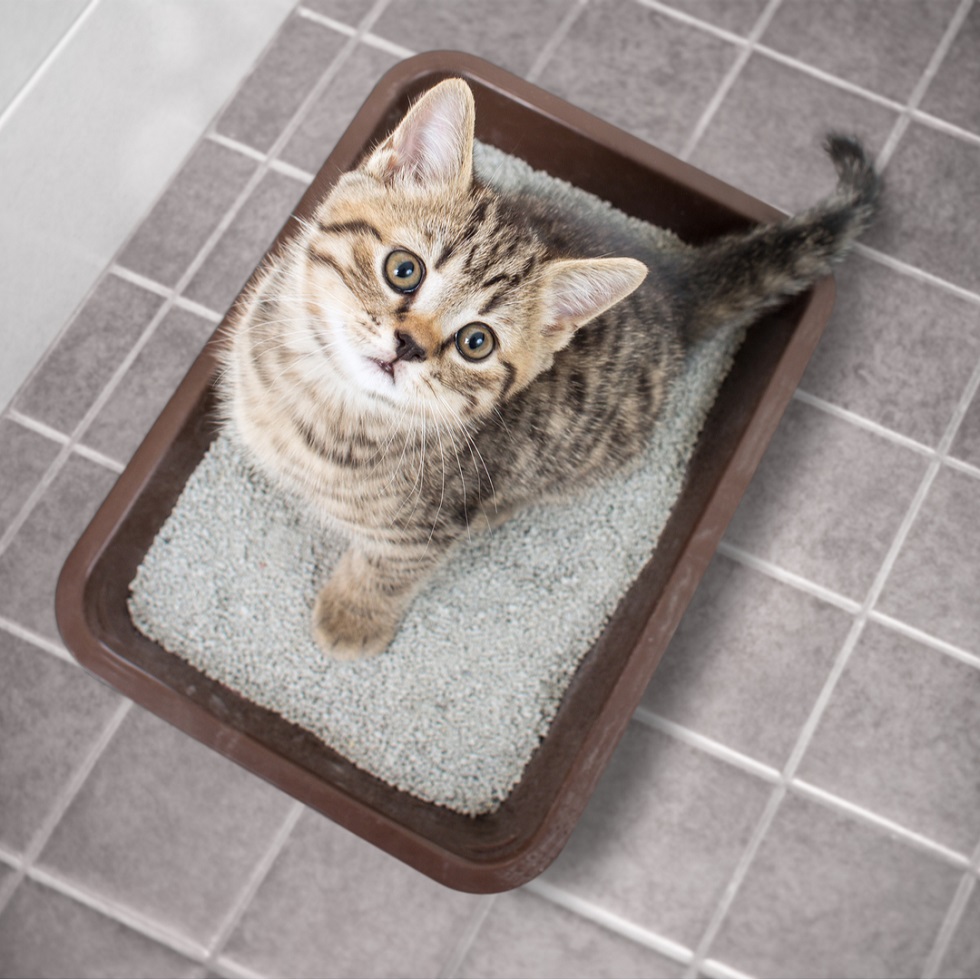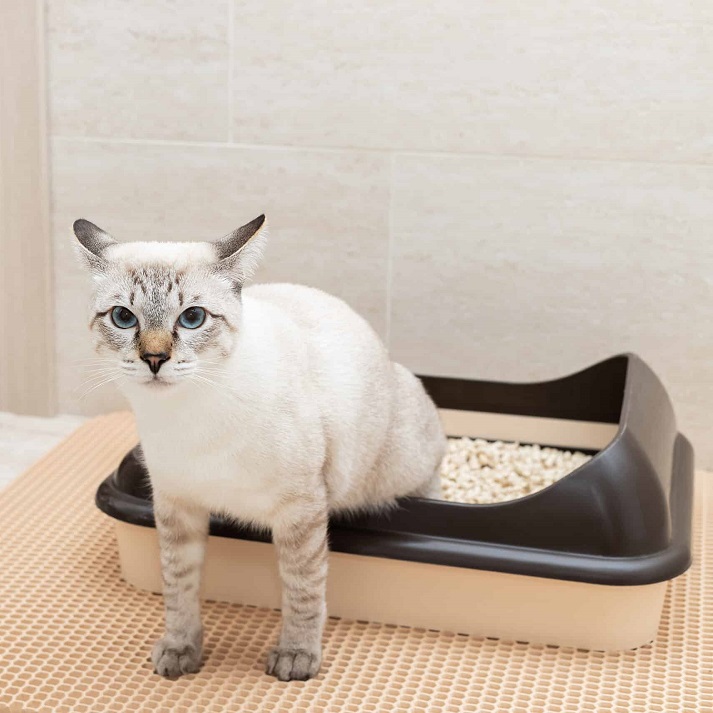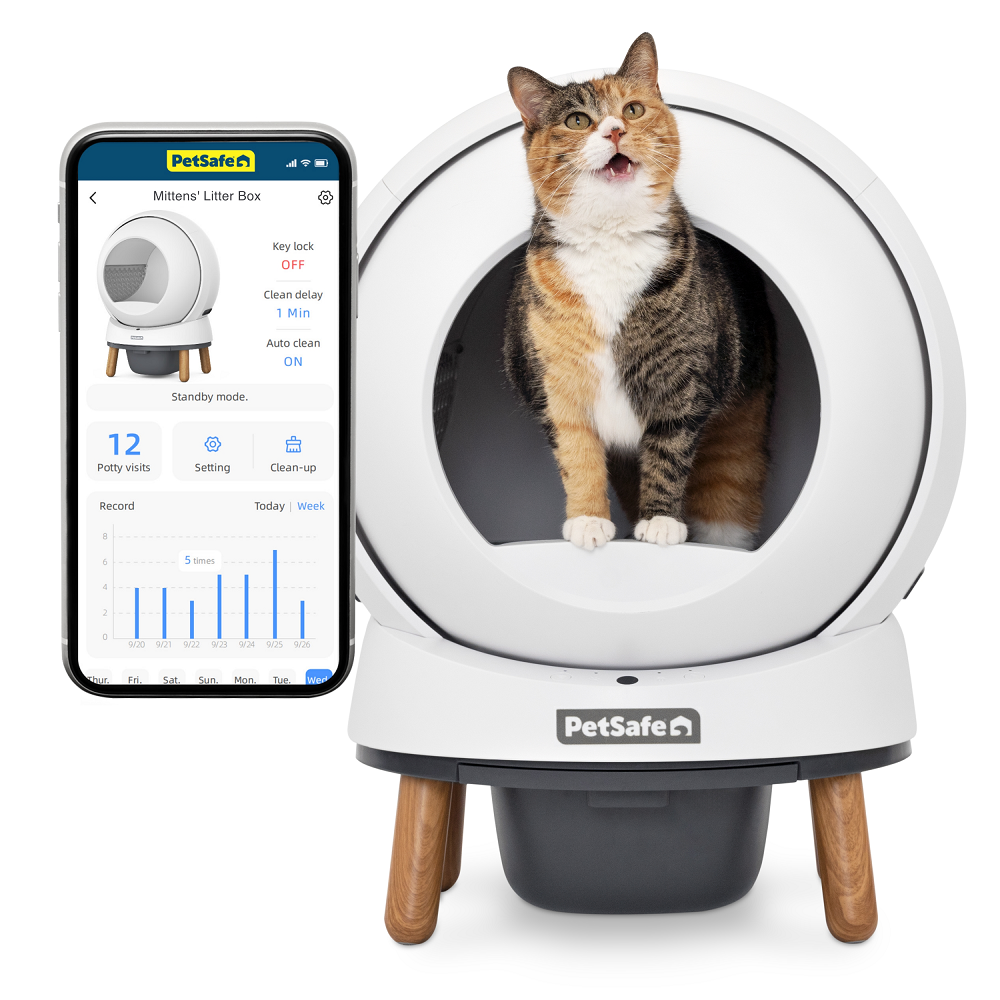Recognizing Litter Box Avoidance and Inappropriate Elimination
When cats avoid their litter box, it’s a sign something’s not right. Recognizing this is the first step in fixing the issue. Cats might stop using the box entirely or use it inconsistently. Watch for signs like cat sitting in litter box but not peeing, or elsewhere. Changes in litter box habits can point to many issues. These could be medical, behavioral, or linked to the litter box setup. Spotting the signs early helps prevent a long-term problem. It’s crucial to note where and when the avoidance happens. This info can lead to a faster solution to get your cat back to normal habits.
Common Litter Box Problems and How to Fix Them
Cats not using litter boxes can frustrate owners. Common problems leading to avoidance include:
- Dirty litter boxes: Cats prefer cleanliness. Scoop daily and do deep cleans weekly.
- Insufficient boxes: One box per cat, plus one extra, helps prevent competition and stress.
- Unsuitable box size: Large, accessible boxes are best. Avoid small or high-sided ones for most cats.
- Litter depth and type: Cats often prefer 1-2 inches of clumping, unscented litter.
- Box placement: Keep boxes in quiet areas. Avoid locations near loud appliances or heavy foot traffic.
- Covered boxes: Some cats dislike hoods or liners. Try removing these if there’s an issue.
Solutions for fixing these common issues involve:
- Regular cleaning: Maintain clean litter by scooping often and replacing litter weekly.
- Box count and placement: Ensure enough boxes in different, easily accessible places.
- Right size and type: Use large litter boxes with preferred litter textures and scents.
- Good location: Place the box in a quiet spot where the cat has an escape path.
- Remove covers: Try using open boxes if your cat avoids covered ones.
Taking these steps can often resolve litter box avoidance. If problems persist, look into other factors, such as stress or medical issues, which could be influencing your cat’s behavior.
Understanding Surface and Location Preferences
Cats often develop strong preferences for their elimination areas. These preferences can be about the surface they use, or the litter box location. To ensure litter box success, it’s important to heed these tendencies. Here are two main preferences you should be aware of:
- Surface Preference: Some cats favor certain textures for elimination. They might prefer soft carpets or the feel of potting soil. Observing your cat’s habits can help you adapt the litter to their liking. Offering a variety with different textures could be beneficial.
- Location Preference: Cats also show preferences for where they feel comfortable eliminating. A box placed in a busy area might cause them to avoid it. Instead, position litter boxes in quiet, low-traffic zones. Ensure your cat can clearly see any approaching people or pets, and has several escape routes for quick exit.
By understanding your cat’s surface and location preferences, you can prevent many common litter box problems. This includes the troubling behavior of a cat sitting in litter box but not peeing. Adjusting litter types and box placement is often necessary. If these actions don’t resolve your litter box issues, it’s time to investigate further. The problem could be medical or related to stress, which we will delve into next.
Medical Conditions That Affect Litter Box Use
Cats may avoid their litter boxes due to various medical conditions. It’s crucial to consider health issues when a cat sits in the litter box but not peeing. This can signal something isn’t right within their system. Here are common medical issues to watch for:
- Urinary Tract Infections (UTIs): If a cat frequently visits the litter box with little output, a UTI could be the problem. Symptoms often include straining to urinate and discomfort.
- Feline Interstitial Cystitis: This inflammation of the bladder can urge a cat to urinate often with pain involved. Cats with this condition might avoid the litter box due to associated discomfort.
- Kidney Stones or Blockage: These can cause pain during urination. Look for signs of distress like crying out or tender abdomens in your cat.
Early detection of these conditions by a vet is important. They can lead to more serious problems if left untreated. Seeking professional help if you notice your cat sitting in the litter box but not peeing is essential. A vet can conduct tests to uncover any underlying medical issues. A proper diagnosis is key to resolving litter box avoidance related to health. Once treated, many cats return to regular litter box use.
Stress, Anxiety, and Their Impact on Litter Box Habits
Cats are sensitive to stress and it can affect their bathroom behaviors. When stressed, a cat might not pee in their litter box. Stressful changes in a cat’s life can upset their routine. This could be a move, new pets, or even shifts in the family schedule. Cats need stability and any disruption can cause anxiety. This anxiety often leads to avoiding the litter box.
To reduce stress and anxiety in cats, create a calm home environment. Keep their daily schedule consistent to give them a sense of security. Introduce new pets or family members slowly to avoid stress. Provide safe and quiet spots for your cat to retreat to when they are anxious.
Monitor your cat’s behavior for signs of stress. These can include hiding more often, eating less, and avoiding the litter box. If you notice these behaviors, take steps to reduce your cat’s stress.
Remember, resolving stress-related litter box issues takes patience. Offer comfort and a stable routine to help your cat. If stress seems ongoing or severe, you might consider seeking a vet’s advice. They can rule out medical causes and recommend solutions. Always watch for any changes in behavior and act promptly.
Strategies for Multi-Cat Households and Litter Box Harmony
Living with multiple cats can sometimes lead to litter box issues. In multi-cat homes, providing enough space for each cat is key to avoiding conflicts. Below are strategies to maintain harmony and ensure all cats use the litter box properly:
- Provide Multiple Litter Boxes: Aim for one box per cat, plus one extra. This reduces competition and stress around litter box access.
- Spread Out the Boxes: Place litter boxes in different areas of your home. This gives cats more options and prevents one cat from blocking access to others.
- Ensure Privacy: Cats value their privacy. Keep litter boxes in quiet, secluded spots where cats won’t be disturbed.
- Monitor Interactions: Watch for signs of bullying around the litter box. A bullied cat might avoid the box and urinate elsewhere.
- Offer Different Litter Types: Cats might prefer different litter textures or scents. Having various options can cater to individual preferences.
- Maintain Cleanliness: Keep all litter boxes clean. This encourages all cats to use them.
- Address Conflicts: Provide hiding spots and perches. These can help reduce stress and aggression between cats.
Using these strategies helps prevent a cat from sitting in the litter box but not peeing due to stress or conflict. Keep an eye on the litter boxes and the cats’ behaviors to catch any issues early. Always have enough litter boxes and keep them clean and well-placed. If problems persist, consulting a vet or a behavior specialist might be necessary. They can offer additional insights tailored to your cats’ needs.
Behavioral Training and Environmental Changes for Litter Box Success
When it comes to training cats for litter box success, both behavior and environment matter. Here are key steps to encourage proper litter box use:
- Identify the right spot: Choose a quiet, accessible location for the litter box. Avoid noisy and high-traffic areas.
- Maintain cleanliness: Cats prefer a clean place to relieve themselves. Scoop the litter box daily and clean weekly.
- Opt for the right litter: Some cats prefer unscented, clumping litter. Observe what your cat prefers and stick to it.
- Gradual changes: If you need to switch litter types, do it slowly. Mix the new litter in gradually to avoid rejection.
- Positive reinforcement: Reward your cat with treats or praise when she uses the litter box correctly.
- Remove stressors: Identify and reduce or remove things that stress your cat. This may help eliminate litter box avoidance.
- Provide multiple options: In multi-cat households, more is better. Have enough litter boxes to prevent competition.
These steps can help solve the issue of a cat sitting in the litter box but not peeing. Through patient training and creating a welcoming environment, most cats will learn to use their litter boxes consistently. If issues persist, it may be time for professional help.
When to Seek Professional Help: Behavioral Specialists and Veterinarians
When problems linger, it’s time to seek professional help. While many litter box issues can be addressed with the guidance provided so far, there are times when the root causes are not easily identifiable or solvable without expert intervention. Here’s when to consider getting help from professionals:
- Persistent Issues: If changes at home don’t lead to improvements, a specialist can offer insight.
- Behavior Changes: Sudden or severe behavior changes may need a behaviorist’s attention.
- Medical Signs: Unresolved health symptoms require a veterinarian’s examination.
- Stress-Related Behaviors: If you suspect your cat’s issues stem from stress or anxiety, experts can provide strategies tailored to your cat’s needs.
Behavioral specialists can observe your cat’s environment and interactions. They might uncover subtle stressors you’ve missed. By visiting your home, or through detailed consultation, they can suggest environmental modifications that cater to your cat’s preferences and needs.
On the medical side, veterinarians play a critical role. They perform physical exams and diagnostic tests to rule out or treat medical problems. UTIs, kidney issues, or other conditions affecting urination may be the culprits behind a cat sitting in litter box but not peeing.
In conclusion, don’t hesitate to call on experts if your efforts aren’t working. Sometimes, specialized knowledge is essential to solving complex litter box issues and ensuring your cat’s health and happiness.





